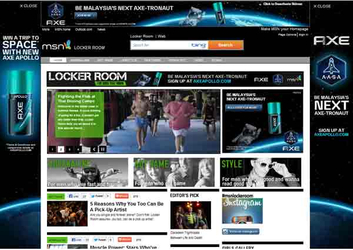The artist Andy Warhol was obsessed with celebrities and celebrity culture. It is said that he co-founded the magazine ‘Interview’ as a vehicle to meet celebrities. Through the magazine, Warhol gave celebrities the stage that they valued; in turn, because of the magazine, they gave him the candidness that he craved.
He got what he wanted by going beyond his core competency of producing great prints.

Toilet paper brand, Charmin, wanted to increase awareness in customers’ minds, as well as sales. But toilet paper is not really something that people think about – until they need it, of course. Plus, it’s not a great conversation topic.
But Charmin managed to get customers to think about the brand, every time they are out and about, and need to use a toilet. And it managed to get influencers talking about the brand and recommending it to others, too.
To do that, Charmin went beyond their core competency of producing toilet paper, and got into making mobile apps. Yes, apps. They created an app that allows users to search for public toilets in selected locations. Not just that, but users can also rate the facilities (and even leave comments and photos!), helping others to assess how clean the place is, whether it has changing tables for babies, and so on.
The app was downloaded millions of times, and has been named ‘best apps for moms’ by the influential Parenting Magazine. Arguably, it increased the sales of Charmin toilet paper by 15% – not bad for a non-sexy product, in a very mature market.

Unilever wanted to tap into the very appealing male grooming market in Malaysia, but its traditional approaches were not working. So, the company had to go beyond their core competency of producing deodorants. They got into virtual communities.
In a partnership with MSN, Unilever developed an online portal, the Locker Room, which offered young males a space to hang out and discuss topics of interest to them. The portal contained sharable articles, videos and quizzes about topics ranging from sports to careers, and, of course, male grooming. It allowed young males to indulge in what Spikes Asia calls ‘Bro Time’. Exposure to the brand’s message was rather subtle, and done in the context of the specific content – for instance, tips within articles, or mentions in quizzes.
The results were astonishing. According to Campaign Asia, the initiative largely exceeded all its user, page views and engagement targets, as well as ‘double-digit growth in brand consideration, awareness and attribute recall across all brands (Axe, Rexona Men, Vaseline Men, Clear Men).’

What Andy Warhol, Charmin Toilet paper and Axe deodorant have in common is that they all went beyond their core competencies, and turned into content producers to provide value to their customers.


2 thoughts on “What do Andy Warhol, toilet paper and male deodorant have in common?”